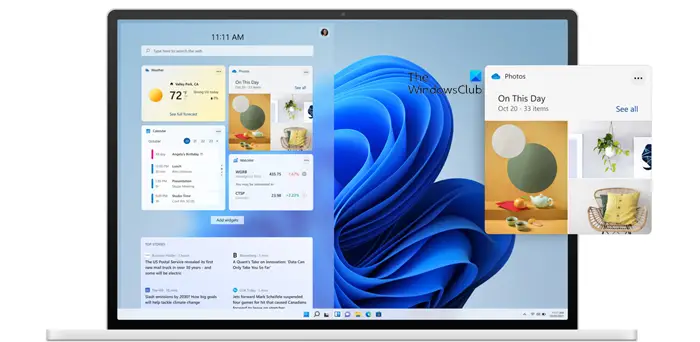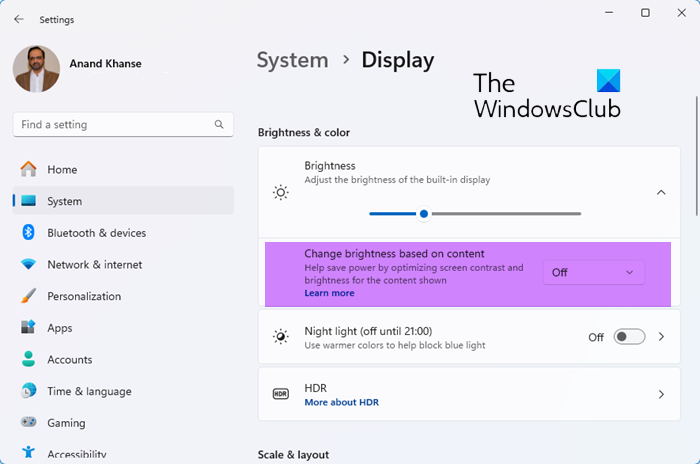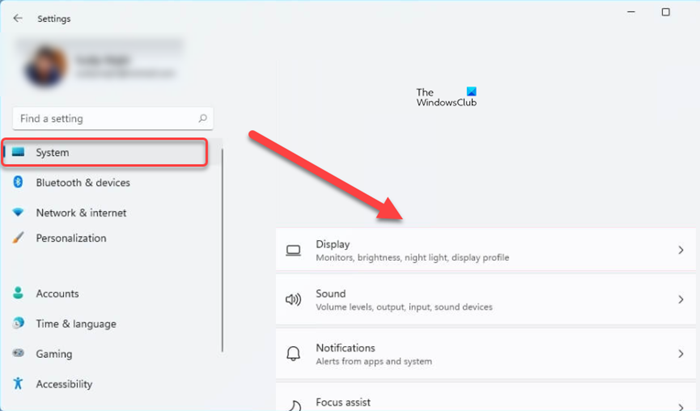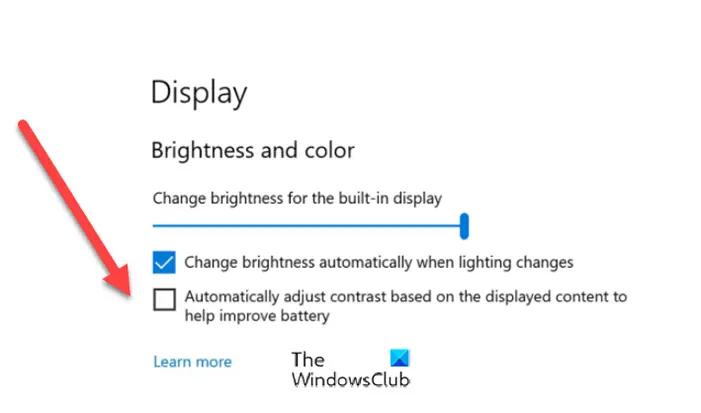Windows OS controls optimal brightness and contrast levels to save your PC power and extend its battery life. As such, your display may appear bright when the computer is plugged into a power source and dim when it is not plugged in. Although necessary to keep the device in a good state, some may not like this Content Adaptive Brightness Control (CABC) feature in Windows 11.

What is Content Adaptive Brightness Control (CABC)?
It’s a technology that automatically controls the screen’s brightness and contrast, depending on the content that is being displayed on the screen. It’s not to be confused with Adaptive brightness as the latter changes brightness automatically based on the room lighting.
Turn off Content Adaptive Brightness Control (CABC) on Windows 11
Almost all modern devices running Windows runs a technology that lowers or increases brightness, depending on the content that is displayed on the screen.
On the latest versions of Windows 11, you can enable Content Adaptive Brightness Control (CABC) to run on laptops and 2-in-1 devices too. Take these steps to configure this setting:

- Open Windows 11 Settings
- Click on System.
- Move to the Display page on the right side.
- Go to the Brightness & color section.
- Against Change brightness based on content, you will see three options in the drop-down menu:
- Off
- Always
- On Battery Only
- Select the one you want.
The Content Adaptive Brightness Control (CABC) feature now runs on laptops and 2-in-1 devices. It dims or brightens areas of a display based on the content and tries to strike a balance between saving battery life and providing a good visual experience. For battery-powered devices, the default is On Battery Only. Because the manufacturer must enable CABC, the feature might not be on all laptops or 2-in-1 devices.
To disable it on earlier versions of Windows 11, follow these instructions.
- Open Windows 11 Settings.
- Click on System.
- Move to the Display page on the right side.
- Go to the Brightness & color section.
- Clear the Automatically adjust contrast based on the display content to help improve the battery box.
Assuming you have Windows 11 installed and running on your system, open Settings.
Choose the Systems tile.

Move to the Display section on the right.

Under Change brightness for the built-in display, look for the Automatically adjust contrast based on the display content to help improve battery option.
If the box next to it is checked, click inside the box again to uncheck it.
When done, close the Settings window and exit.
This will disable the Content Adaptive Brightness Control (CABC) in Windows 11.
If you wish to enable this feature any time again, simply check the box next to Automatically adjust contrast based on the display content to help improve the battery option.
I hope it helps!
Now read: How to use the Voice Typing Tool in Windows 11.